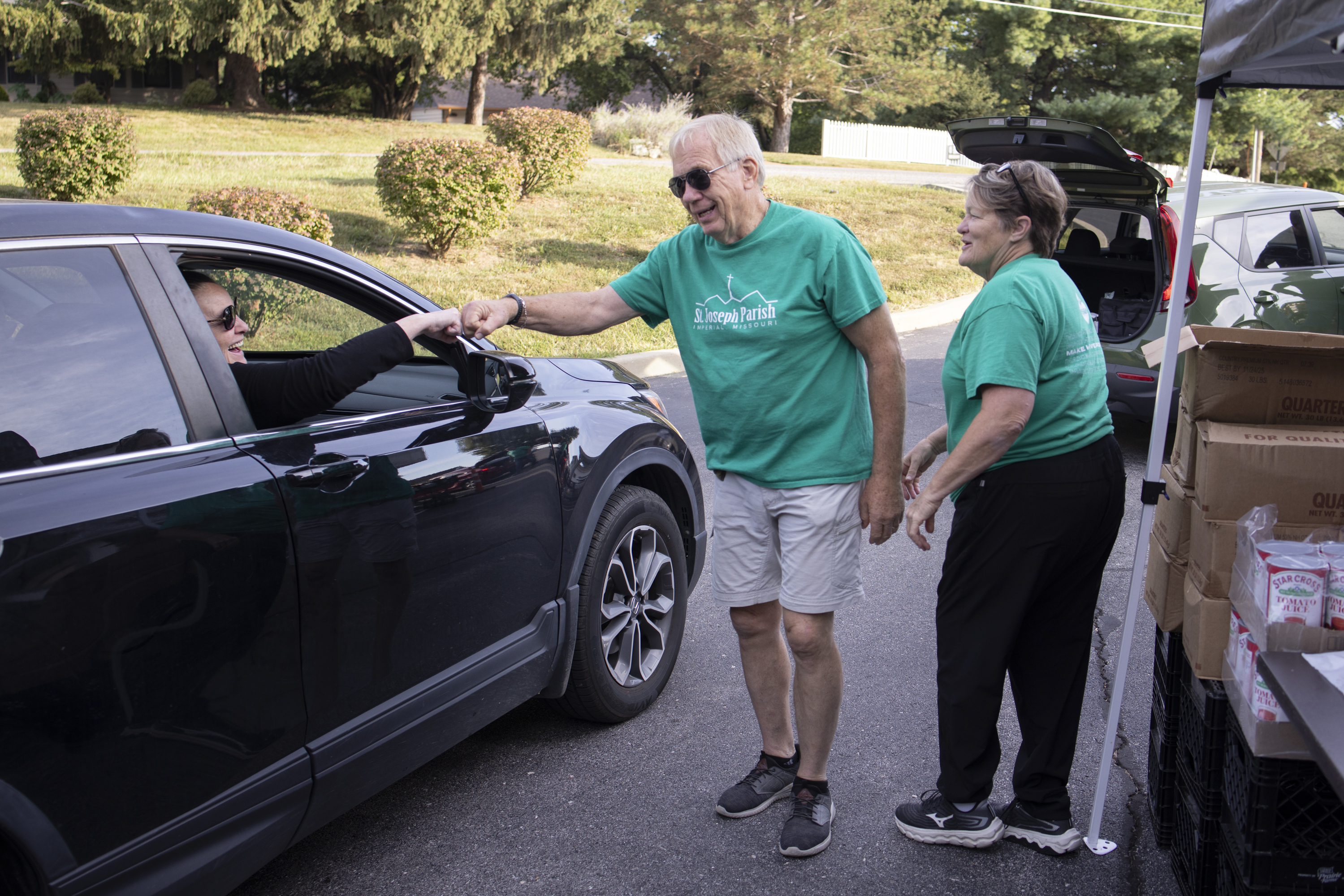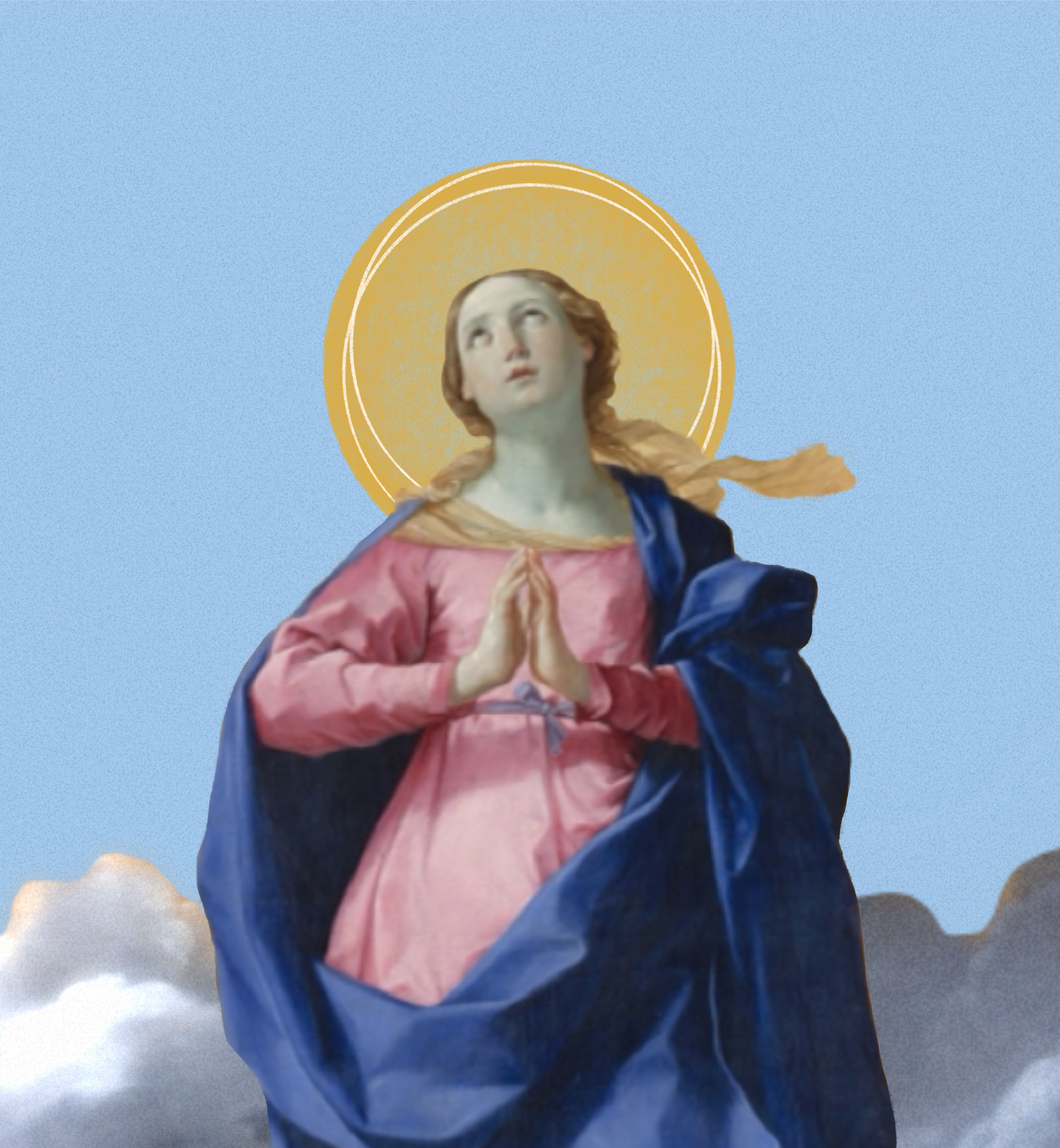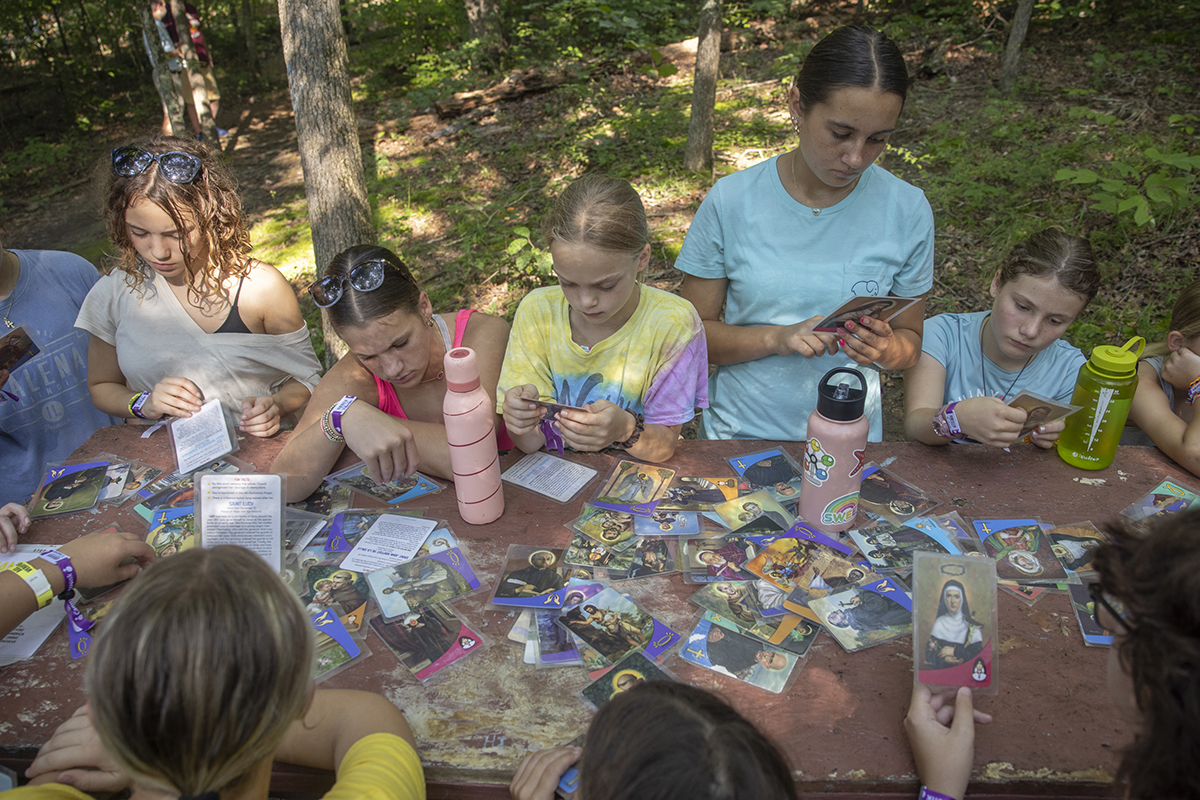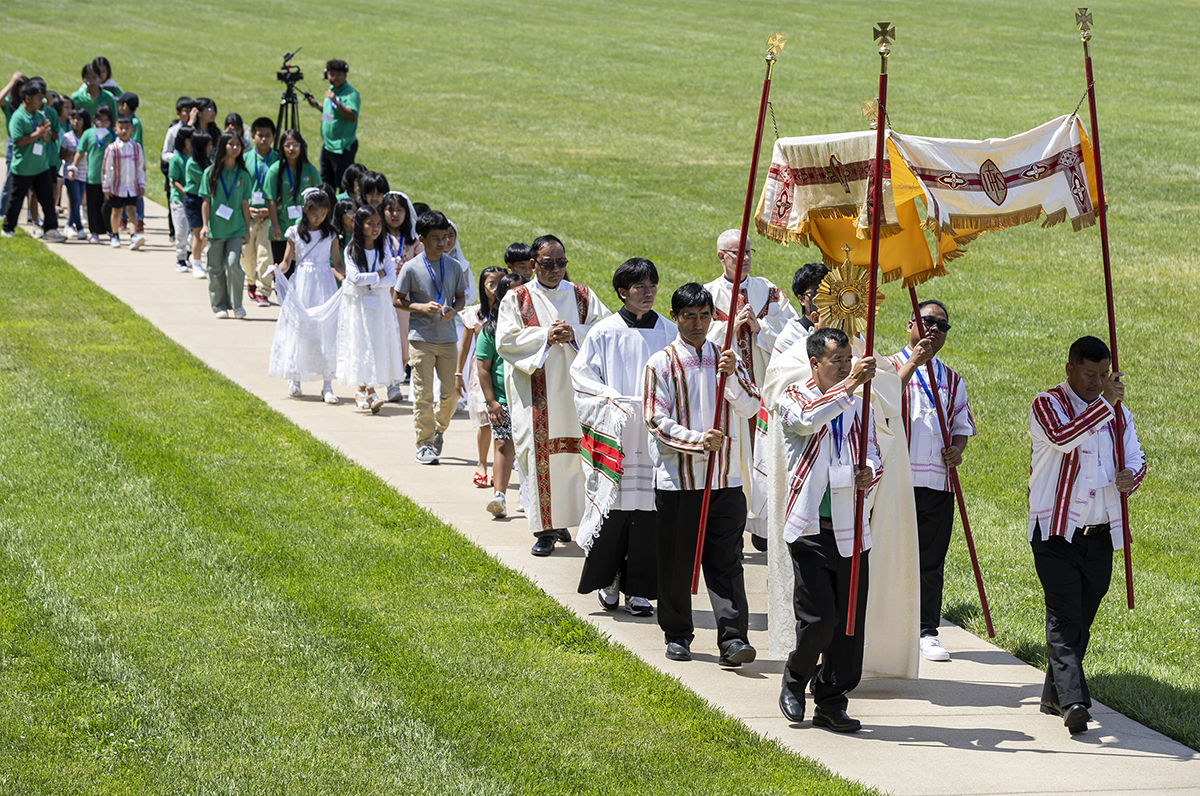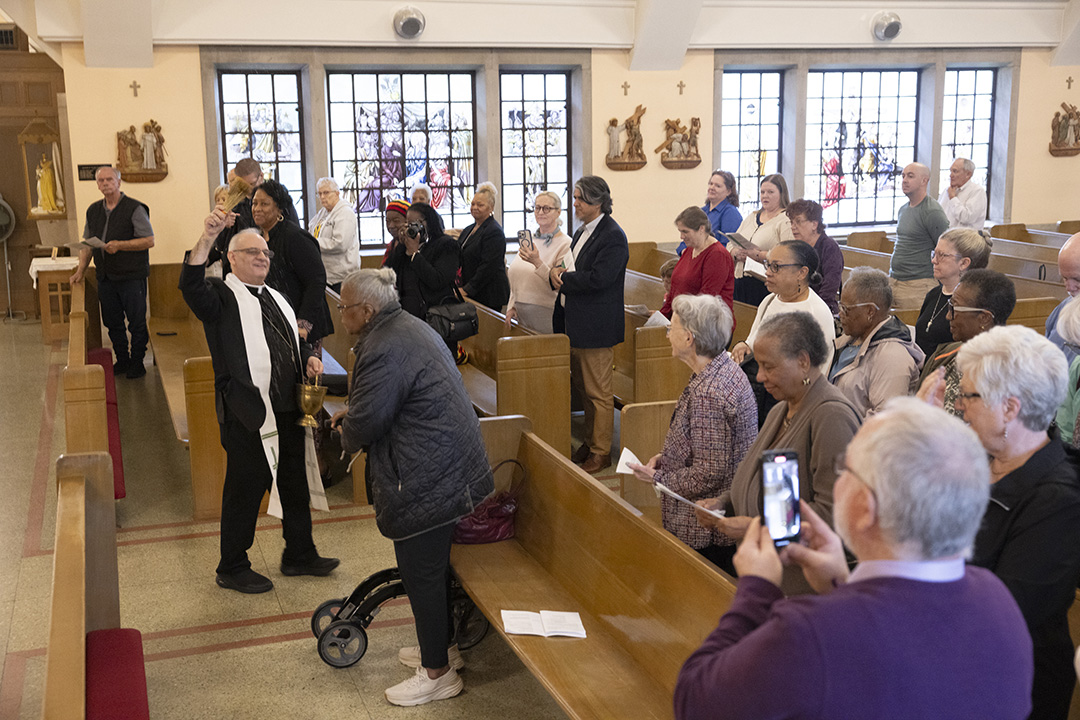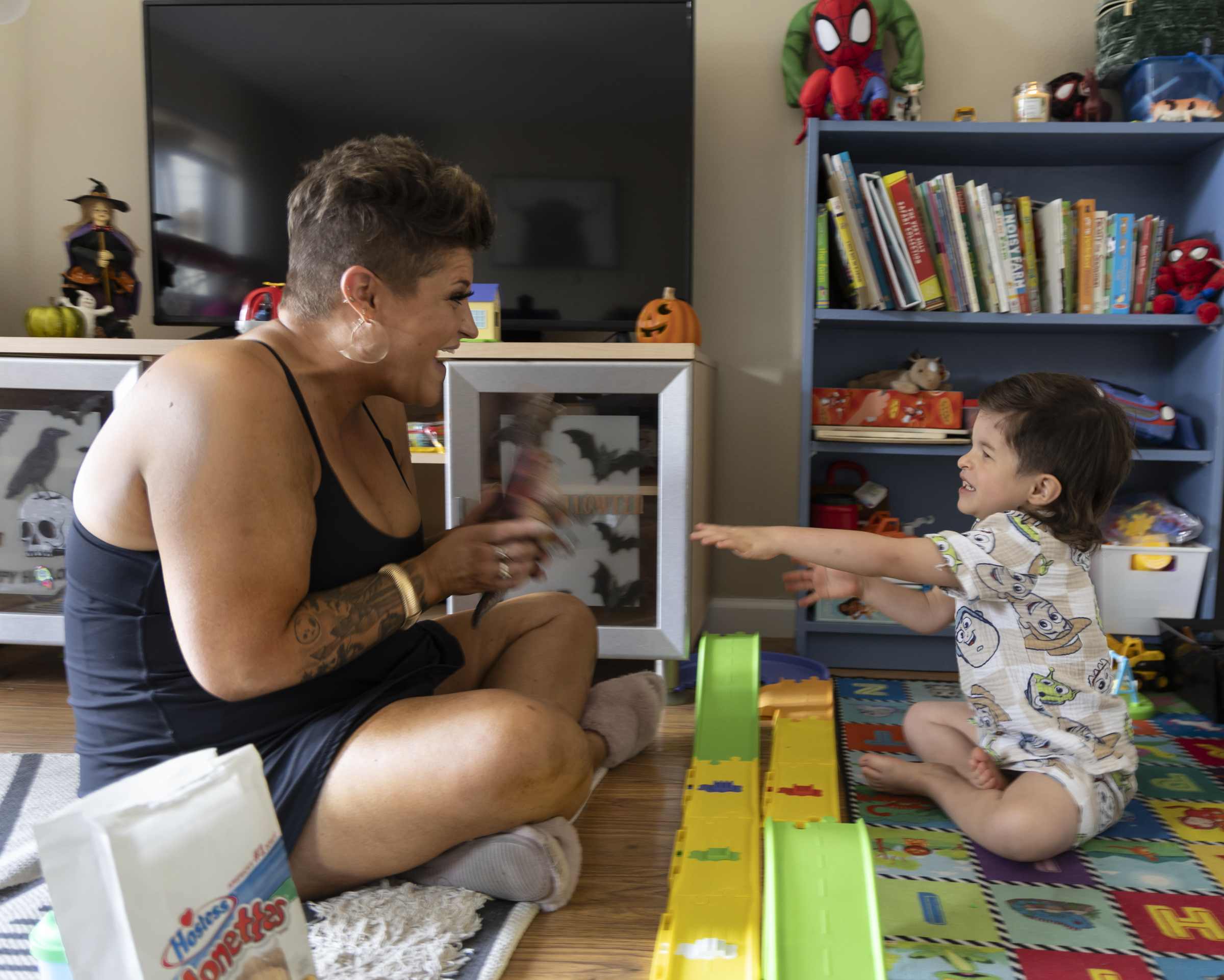A prayerful, joyous community in rural Colombia
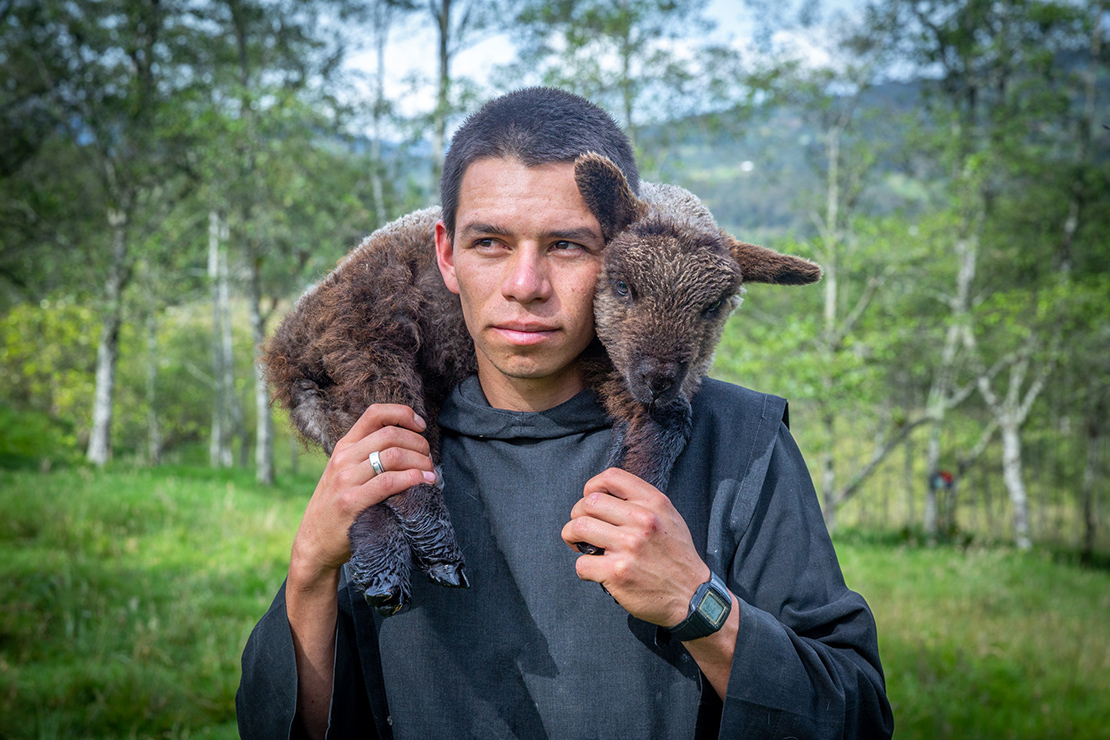
Path from restlessness to contentment illustrates Messengers of Peace purpose
ARCABUCO, Colombia — The sheep at the Messengers of Peace monastery in Colombia respond to the whistling of Brother Jeffers, moving in unison. At a place dedicated to serving Jesus, the Gospel stories of Jesus as shepherd easily come to mind.
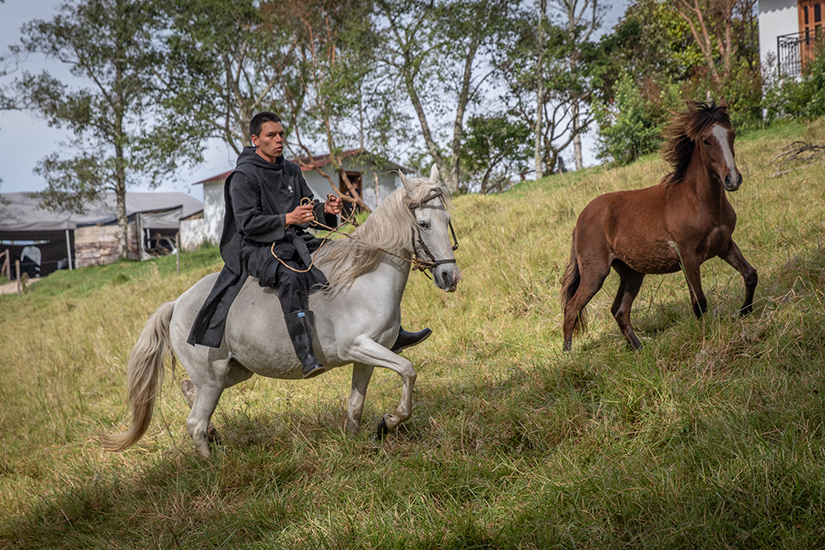
Every morning, after prayers and Mass, Brother Jeffers and the monastery’s German Shepherd, Cisco, jump into a motorcycle-wagon that takes them around the 24-acre monastery. Brother Jeffers stops along a path near the chicken coop, getting feed from a bucket and placing it in hanging containers inside the coop. He corrals most of the chickens into the coop, then spreads corn on the ground for a different set of chickens.
After feeding fish in the lake, he heads to the pasture to check on the cattle, two horses and donkey. He spreads a mixture of salt and minerals for them to eat while keeping an eye on Cisco and the monastery’s collie, Lassie. Brother Jeffers, who runs everywhere when he isn’t in the vehicle, sped across the path and picked blackberries before heading to take care of the sheep, feeding a sick lamb with a bottle. Sometimes he’ll ride one of the horses in the pasture.
That early December evening, in the living space of the Messengers of Peace at a relaxed gathering with visitors from St. Louis — Archbishop Robert J. Carlson and Father Mike Boehm — Brother Jeffers told his vocation story. In 2015, he was a partier, “looking for happiness,” but he never found it, he said.
On the Feast of Our Lady of Guadalupe that year, the Messengers of Peace hosted a lifesize, three-dimensional image of Our Lady of Guadalupe. People lined up to view it, place their hands in her hands and prayed.
The then-teenager’s mother wanted to see the display, so he grudgingly accompanied her on a two-hour trek from their small family farm. And he reluctantly joined the pilgrims waiting in line.
Then he put his hands on the image and unexpectedly he felt his heart full of joy and happiness. He knelt down and cried.
Then and there, he promised the Blessed Mother he would change — go to confession and Mass, give up the hard partying. “Why should I look for happiness where it isn’t, when I know it’s in God?” Brother Jeffers said, reflecting back on that time.
After visiting the image, he “felt like I was flying and walking with happiness,” he said.
A vocation didn’t occur to him right away, but eight days later he went to the Missionaries of Peace and told them of his experience. He didn’t know much about the Church but felt “God wanted me here,” Brother Jeffers said.
He had a year left of school and waited to enter the Messengers of Peace, “the hardest year of my life,” he said. “It was like having a cake and not being able to eat it.”
Upon entering the community, he said, “I was the happiest man in the world.”
Turning to Archbishop Carlson, co-founder of the Messengers of Peace, Brother Jeffers said, “Thank you for giving me this opportunity.”
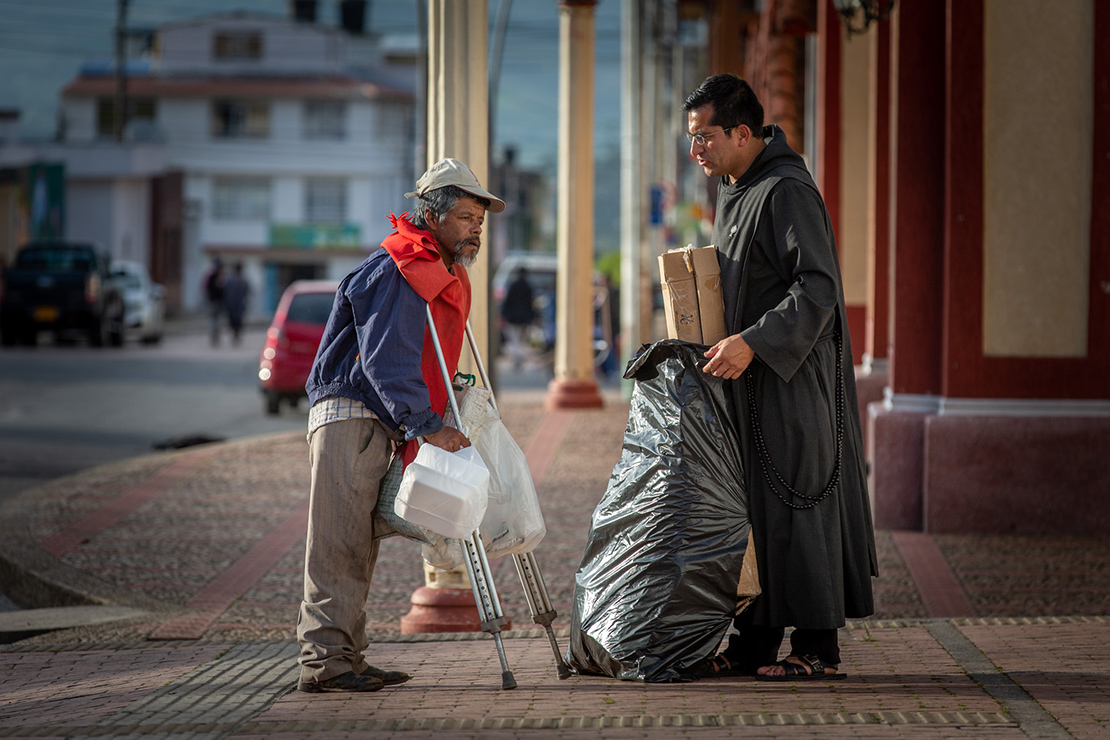
THE BEGINNINGS
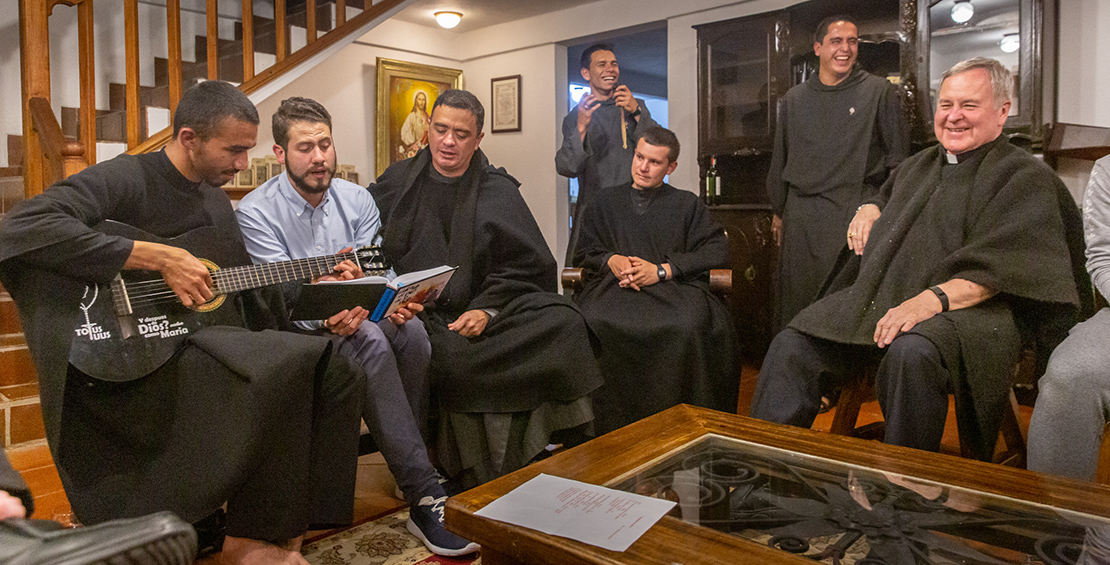
In 1994, Luis Mesa was finishing work on a house in Colombia, and his plans were to retire there after a successful business career. His children, whom he raised as a single parent, were out of the house.
In a visit to family in Sioux Falls, S.D., Mesa met then-Bishop Carlson, who was serving as bishop of Sioux Falls.
Before long, Archbishop Carlson asked him to enter the seminary in Sioux Falls. He also asked the-now-Msgr. Mesa to sell his other properties and keep his place in Colombia because it might have a use. Later, after praying about it, Archbishop Carlson suggested that it would make for a place of prayer for peace in Colombia — at the time insurgent groups were active along with kidnappings — and the world, and also to assist the poor.
Msgr. Mesa, ordained for the Diocese of Sioux Falls, and now incardinated in the Archdiocese of St. Louis, had similar thoughts. He returned to Colombia in 2005 and began work with the poor and helped in several parishes. Soon afterward, a Colombian priest invited several men to visit Msgr. Mesa. After a few retreats, several decided to stay and thus began the community.
Today, the community includes 10 brothers, four aspirants and three priests. One brother will be ordained a deacon next year, but there’s no expectation that brothers will become priests. The monastery is a collection of small buildings with Spanish-style architecture; one serves as a classroom with internet access for online courses. There’s a sports court for soccer, basketball and volleyball. Up a hill at the entrance is a new chapel.
In a home in the nearby town of Villa de Leyva, two women are the first members of the Messengers of Peace women’s religious community, with another in formation. In addition, the Messengers of Peace founded a home in the town for girls who have suffered trauma or abuse; the Daughters of Mary Immaculate and Co-Redemptrix care for the girls and help them recover their dignity and develop leadership skills. A medical clinic and a food pantry are part of the work. Catechesis is offered as well.
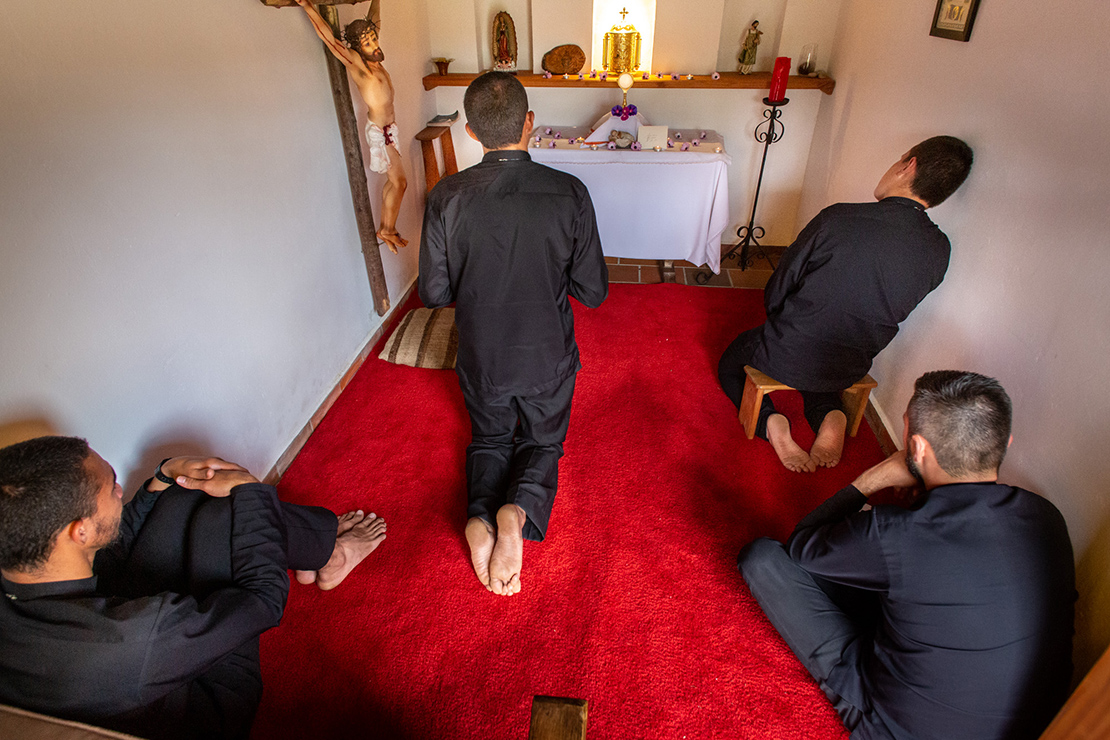
JOY
After Brother Jeffers shared his vocation story, Brother Francisco brought out his guitar and the men broke into singing “Happy Birthday” for Father Boehm, part in English and part in Spanish. At the end of the song, they raised their hands to their faces then
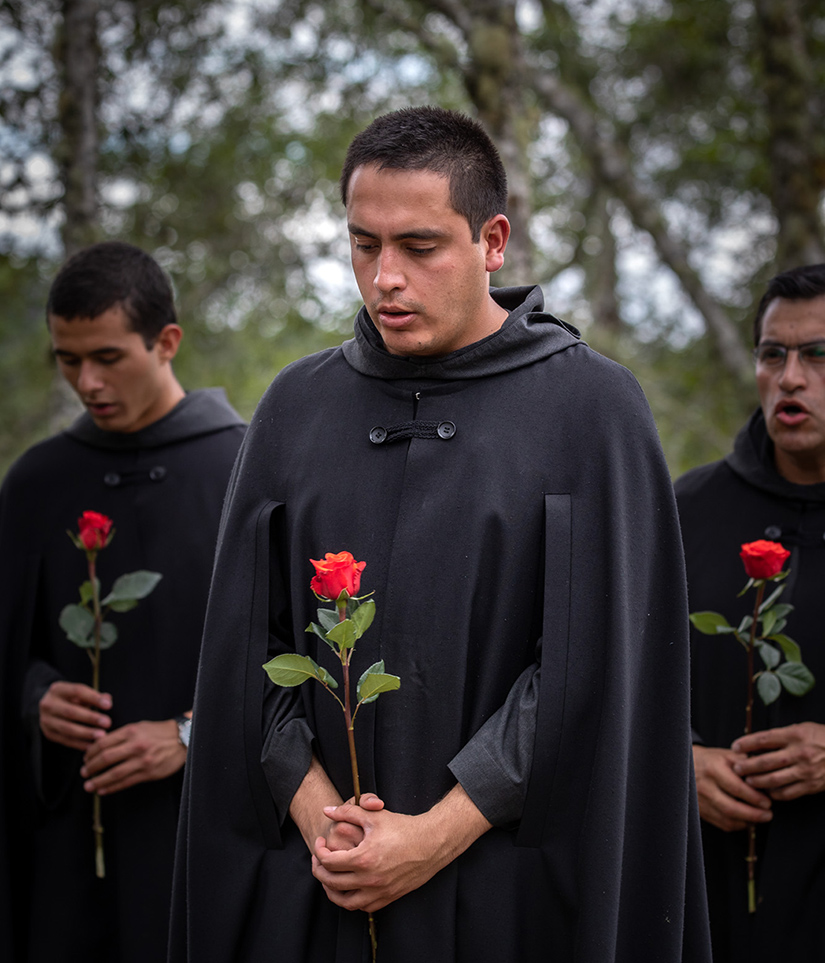
sprang one hand into the air while making noise to simulate fireworks, much to the embarrassment of Father Boehm, the archdiocesan vicar general and vicar for priests. It was one of six times the men noted his birthday with song.
The evening continued with more music, the joy evident as they sang with gusto “Suffering Servant,” “Praise God,” “The Love of Our God,” “Coming Down the Mountain” and more. Archbishop Carlson joined in the fun.
The St. Louis Archbishop told them about his admiration for St. John Paul II and about the pope’s pastoral visit to St. Louis in 1999. Then an auxiliary bishop in Minnesota, Archbishop Carlson and seminarians from the diocese visited with the pope. Archbishop Carlson also talked about being a deacon at a rural parish, a new experience for the up-to-then city dweller. He laughed about his first visit to Colombia and being surprised by fireworks to celebrate a feast day.
On the first day of the visit in December, at Mass in the chapel, Archbishop Carlson set the tone for the visit. “We can never, ever take our faith for granted,” he said in the homily. “Each day we must pray for deeper faith. I must do that. Monsignor (Mesa) must do that. We’re all called as Messengers of Peace to challenge each other, to support one another, to share the Word with anyone who needs forgiveness. We always must depend on the Lord.”
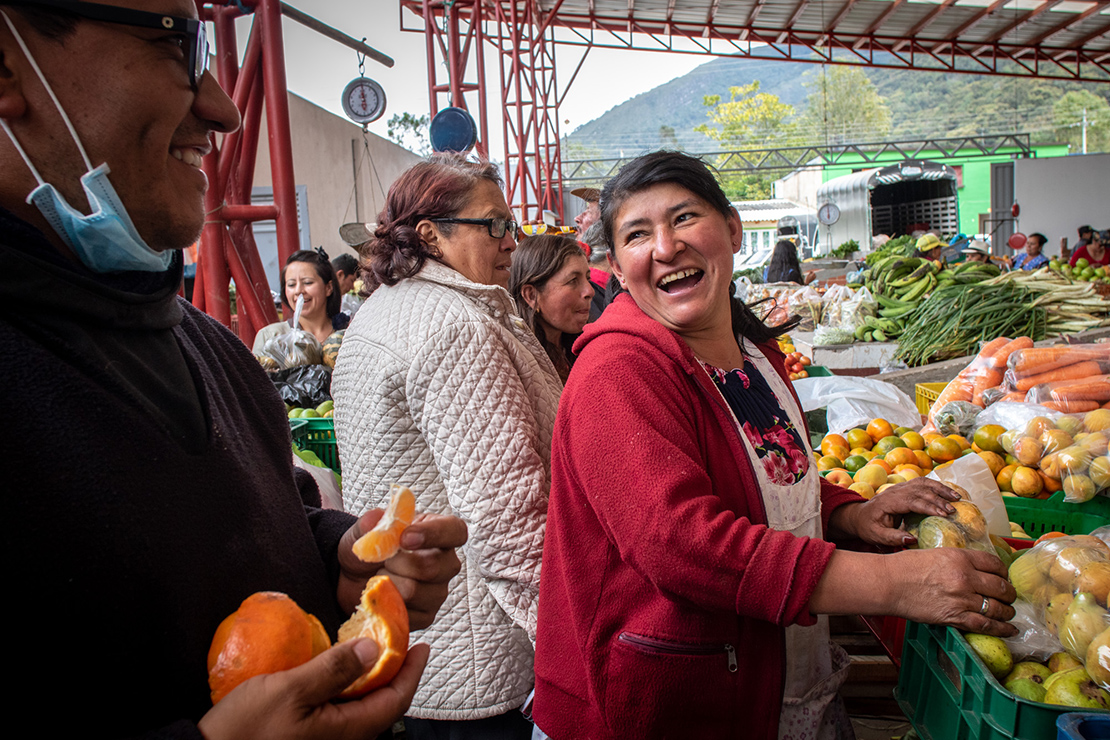
>> Colombians put faith in God
Waiting outside the farmers’ market in Arcabuco, Colombia, Maria de Jesus Medina talked about how the Catholic faith touches the people of the community.
“It’s very important — your faith in God and it helps your self-worth,” she said.
She appreciates the various feast days, especially the feast of Our Lady of Amparo.
Medina and about a dozen other people warmly greeted three members of the Messengers of Peace, who came to the market to do their weekly shopping for fruit. The Messengers shook hands and chatted with vendors such as Victoria Suarez who pointed to the papaya, mangos and more, some imported and some grown on nearby farms. Down the road from the monastery, for example, is a potato field.
After the market, the brothers visited the parish office of Our Lady of Amparo Church, located on a well-kept town square, which is fronted by large wooden crosses. The Messengers of Peace staffed the parish temporarily until a priest from the local diocese took over in mid-December. The Messengers of Peace enhanced the parish’s spiritual life and physical plant while there.
Rafael Edwardo and his daughter, Jennifer, stopped by on their motorcycle for a short visit. He’s sad that the Messengers of Peace ended their service to his parish, he said, calling their work “excellent.” Yvonne Saavevra, parish secretary, said the temporary administrators of the parish had good organizational skills. She added that the members of the monastic community “transmit peace and are very loving.”
The last stop was alongside a two-lane highway at the foot of a mountain. Streaming from a faucet extending from the base of a steep ravine was fresh water that ran under the road and into a stream. The brothers filled 10 10-gallon plastic water jugs while another motorist pulled up alongside and took turns. Unlike in some other parts of Latin America, the mountain region has plenty of uncontaminated fresh water available to residents.
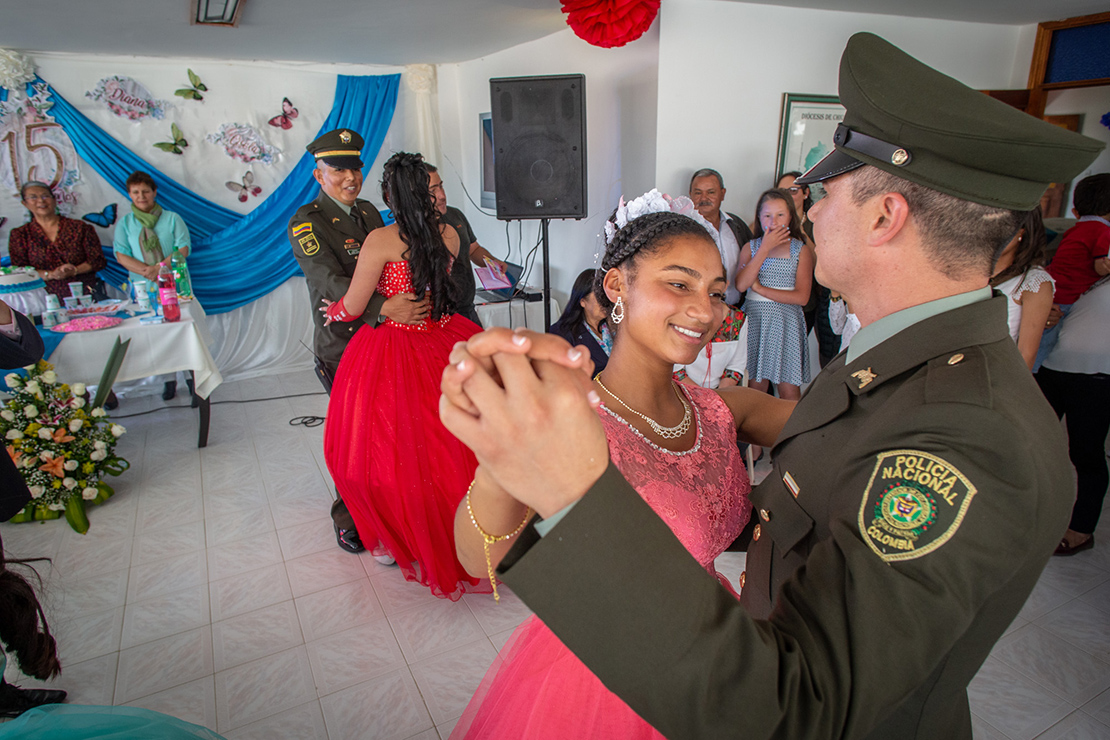
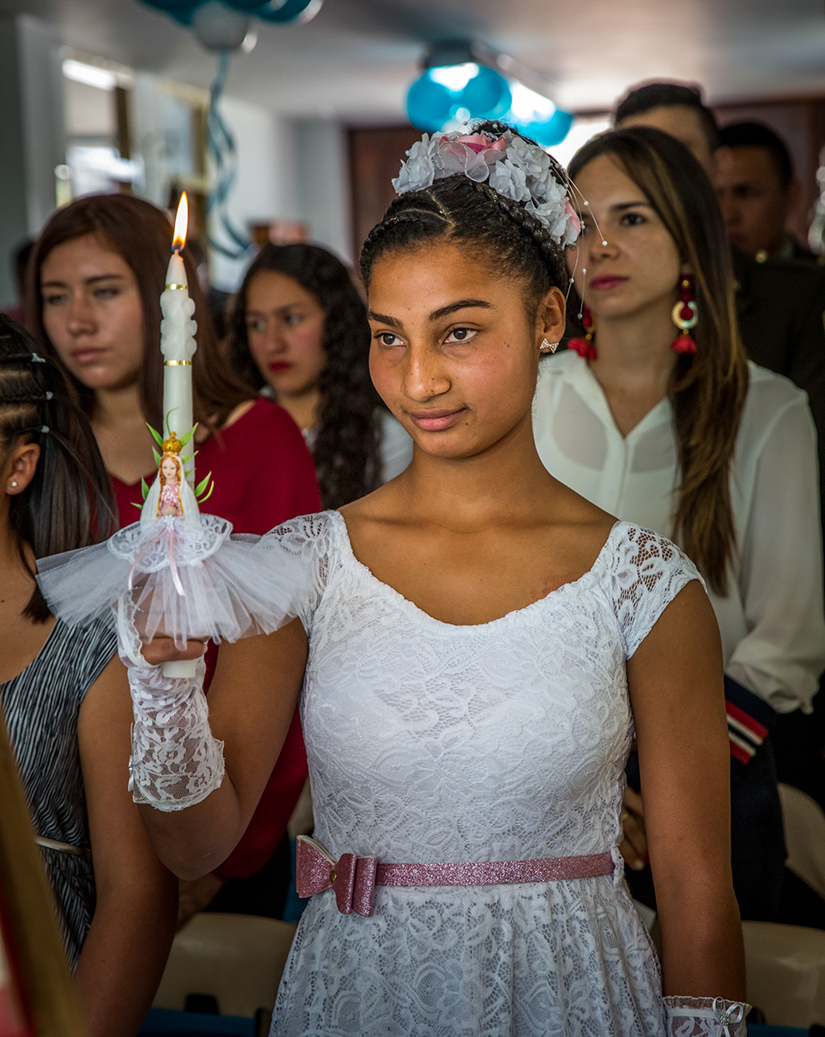
>> Our Lady of Guadalupe celebration
ARCABUCO, Colombia — At a monastery named after Our Lady of Guadalupe, the Dec. 12 feast day in her honor was an emotional, joy-filled celebration.
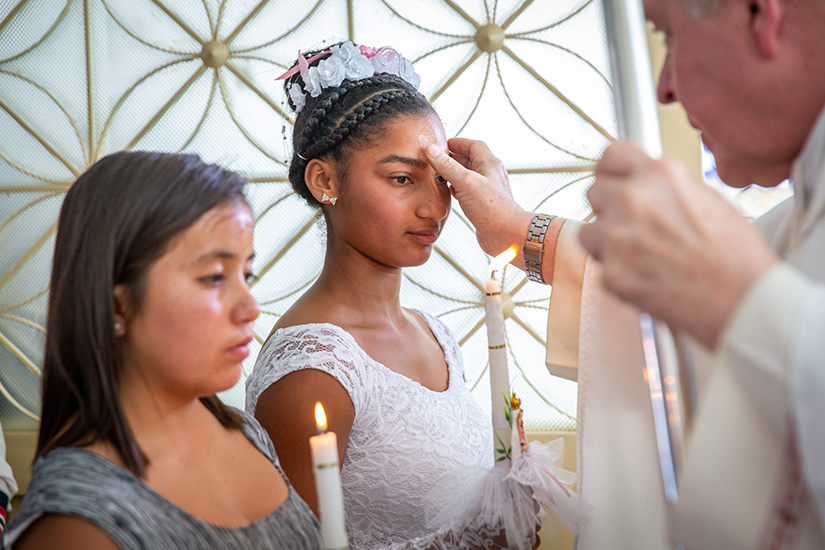
The emotion came at the clothing ceremony and renewal of vows of the Messengers of Peace and at a simulation of St. Juan Diego’s visit in 1531 to his bishop to show him the miraculous proof of his encounter with the Blessed Mother and her request for a chapel to be built in her honor on the site of a former pagan temple.
The day began with a procession from the main monastery building up a hill to the chapel at the entrance to the property. Archbishop Robert J. Carlson of St. Louis, a co-founder of the Messengers of Peace religious community and monastery, was the main celebrant of the Mass.
People from the countryside and from the nearby community waited inside the church and outside. Chairs were carried inside the church to supplement the pews, and still there wasn’t enough room for everyone. Many families came with children, all well-behaved despite a lengthy Mass. Two women who used canes to maneuver, one with an oxygen tank, found their way to seats.
During the Mass, four of the Messengers of Peace received their habits and new names as novices. They are Brother Giovanni de San Juan Bautista, Brother Juan de Jesús, Brother Francisco de la Pasión de Jesús and Brother Mauricio del Sagrado Corazón.
It was the first anniversary of Father Wilson de la Sagrada Eucaristía’s ordination and a renewal of vows for five temporary professed brothers: Alex de la Sagrada Familia, Eduardo de San Josè, Jeffer de Nuestia Señora de Guadalupe, José de Jesús and Mauricio del Sagrado Corazón de Jesús.
Tears of joy were shed as the men’s parents walked them up the aisle and assisted in the ceremony. Relatives and friends read Scripture.
In the homily, Archbishop Carlson discussed the feast and how the bishop at first didn’t believe St. Juan Diego but the peasant-saint persisted. The Blessed Mother, he said, is a “gift” providing
motherly care during the journey of faith. And, he said, St. Juan Diego illustrated the need for everyone to be more persistent in bringing Christ to others. He later said he is moved by the events surrounding the apparition, and the congregation showed their devotion through heartfelt prayer, song and applause.
Appropriately during the petitions, the congregation prayed for peace in Colombia and in the world.
After Mass, a reception was held in the courtyard of the church, but many people stayed in church to pray before an image of Our Lady of Guadalupe. Msgr. Luis Mesa, co-founder of the Messengers of Peace, blessed young couples and others.
Brother Juan de Jesús’ mother, Maria Argenis Valencia, said she gives “thanks to the Almighty for having chosen my son to be on this path.”
>> Messengers of Peace
• The origins and purpose are grounded in prayer, while living out the message of peace by working with the poor.
• Co-founded in 2005 by Msgr. Luis Mesa and Archbishop Robert J. Carlson in Colombia. Prayer, work and spiritual accompaniment make up the charism.
• The motto of the community is “Whatever God wants, however God wants, whenever God wants and wherever God wants.”
• On the feast of Our Lady of Guadalupe, Dec. 12, 2006, Msgr. Mesa and two other men took vows as members of the new community. Msgr. Mesa became superior, and the group named Our Lady of Guadalupe as its patroness.
• Two female members live in a separate mission, called Regina Pacis, or Queen of Peace, in Villa de Leyva.
• First priest ordained in 2011
• Now includes 17 members, including three priests).
>> Colombia
Status: A decades-long conflict between government forces, paramilitaries and anti-government insurgent groups heavily funded by the drug trade, principally the Revolutionary Armed Forces of Colombia (FARC), escalated during the 1990s. After four years of formal peace negotiations, the Colombian Government signed a final peace accord with the FARC in November 2016. Despite decades of internal conflict and drug-related security challenges, Colombia maintains relatively strong democratic institutions characterized by peaceful, transparent elections and the protection of civil liberties.
Area: Slightly less than twice the size of Texas
Religions: Roman Catholic 79 percent, Protestant 14 percent (includes Pentecostal 6 percent, mainline Protestant 2 percent, other 6 percent), other religions 2 percent, unspecified 5 percent (2014 est.)
Arcabuco, Columbia: A municipality in the Ricaurte Province, part of the Colombian Department of Boyacá. It’s on the Altiplano Cundiboyacense at 8,986 feet
Source: The World Factbook
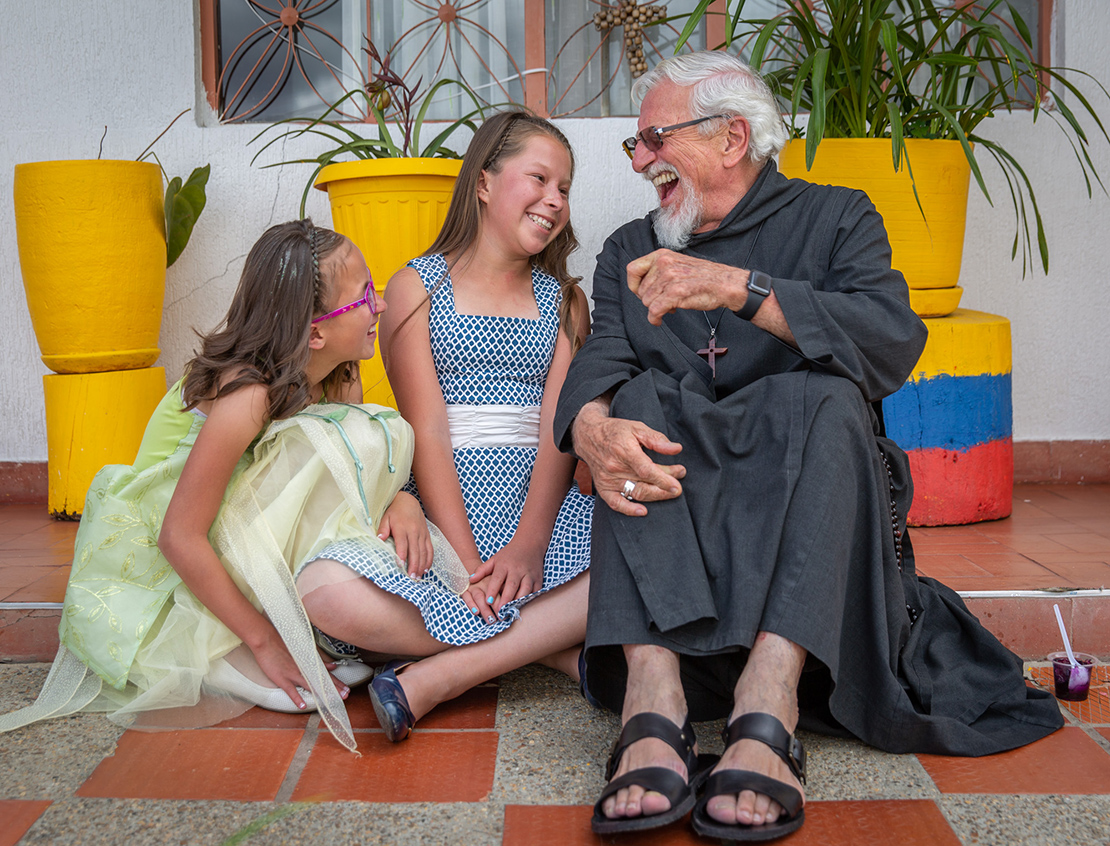
THE MESSENGERS’ LEGACY: A HOME FOR GIRLS IN NEED
Loving environment provided for victims of trauma, abuse
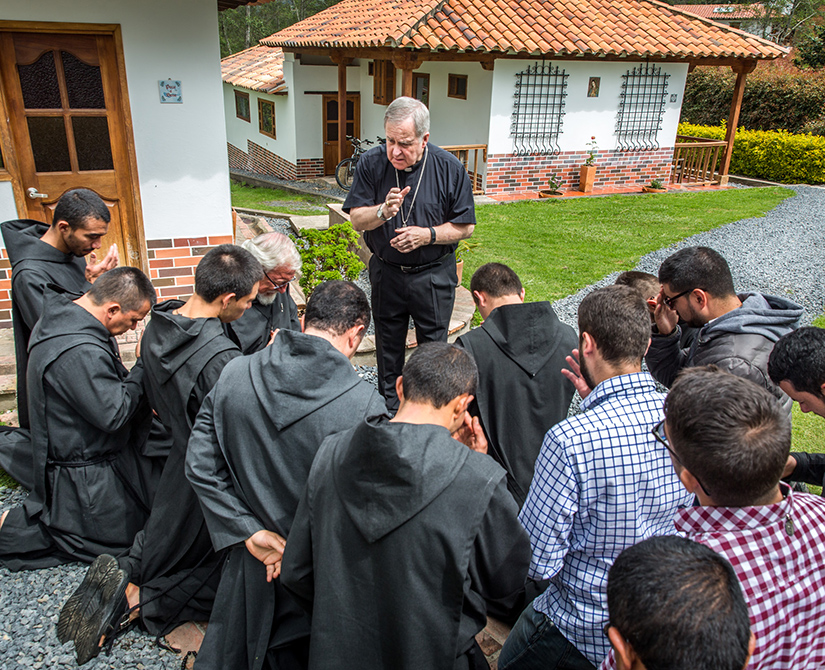
VILLA DE LEYVA, Colombia — After Mass at Talita Kum in Tinjaca, Colombia, people scampered to prepare for a celebration. Bright red and blue balloons, sparkling butterflies, flowers and other decorations made the plain white walls of the meeting room come alive.
Soon, the room filled with anticipation, then four girls processed in wearing brightly colored gowns with long skirts, full and flowing. The party was a quinceañera celebration of faith, independence and grace for four residents of the home.
A quinceañera celebrates a girl’s 15th birthday, marking her passage from girlhood to womanhood. Both a religious and a social event, it emphasizes the importance of family and society in the life of a young woman.
The event in December included all the elements of a typical quinceañera, though with police officers in uniform serving as their escorts and two bishops present for the celebration. The quinceañera was an example of how the home for girls who have suffered trauma or abuse provides the normalcy of family life for all its residents; it showed the effort the home makes to provide the girls with self-worth.
Talita Kum was begun and is overseen by the Messengers of Peace and receives funding from the Pan y Amor program of the Archdiocese of St. Louis Mission Office.
The Mass was celebrated by Archbishop Carlson, co-founder of the Messengers of Peace. Concelebrants included Father Mike Boehm, vicar general and vicar for priests of the Archdiocese of St. Louis. Archbishop Carlson also administered the Sacrament of Confirmation and First Communion for two of the 15-year-olds and two other girls who reside at Talita Kum.
The residents, staff and others awaited the visit of Archbishop Carlson just as they await Christmas, Bishop Luis Felipe Sánchez Aponte of Chiquinquirá, Colombia, said at the end of Mass. They waited a year for that Christmas present, he said, and the visitors brought happiness, the same happiness as Christmas.
The sacrament was administered in the home’s small chapel with relatives and friends attending. A saying on the wall speaks to the concern the home has for the girls’ spiritual lives. Translated from Spanish, it states, “Above all things take care of your heart, because it determines the course of your life.”
In the homily, Archbishop Carlson touched on that concern, noting that “the Lord fills love in the heart.” Noting that he was honored to confirm the girls, he said, “I pray that as they receive the gifts of the Holy Spirit they will use it wisely.”
At the end of Mass, Msgr. Luis Mesa, co-founder and superior of the Messengers of Peace, advised the girls to fill their minds with good things, avoiding the undesirable path that society touts. And, he said, “be wise about what you put in your heart.”
The girls, ages 6 to 18, have suffered trauma or abuse in their family lives. The Daughters of Mary Immaculate and Co-Redemptrix care for them and help them recover their dignity and develop leadership skills. Helping with their adjustment are two dogs given to the home by Archbishop Carlson. Msgr. Mesa noted that two sisters, at the time 4 and 6, came to the home eight years ago after their father was murdered and their mother was decapitated. The girls spent two days in the home before teachers summoned authorities. Msgr. Mesa was urged to help protect them.
Bishop Sánchez, interviewed after the events, said the Messengers of Peace represent “our prayer to God.”
He explained that the help and support is essential to girls “in a very hard situation. They are like another parent, and they are real image of God. With love they build peace in the hearts of the people of our archdiocese.”
As builders of peace, solidarity and justice, the Messengers of Peace bring happiness, faith and inspiration for all the priests and religious of the diocese, the bishop said. “They shine in our diocese for their testimony, help and charity.”
The Messengers of Peace raised funds to renovate the home, which lacked proper sewage and had windows missing initially. Founded in 2005 with the guidance and support of Archbishop Robert J. Carlson, the Messengers of Peace is a religious community dedicated to praying for peace in Colombia and around the world. Members perform works of peace through ministry to the children, elderly and poor of Colombia. The community, which began in Villa de Leyva and now has a monastery outside Arcabuco, receives financial support through the Annual Catholic Appeal and archdiocesan Mission Office.
Pan y Amor
• Sponsors children at Talita Kum in Colombia as well as nine similar residences for children in Bolivia, Kenya and Uganda. Talita Kum is a home for girls 6-18 years old who have suffered trauma or abuse.
• Provides for both the physical and spiritual needs of children.
• Sponsors select a program and give monthly to support the children.
• For more information, visit https://bit.ly/2RFSH3C or contact the Archdiocesan Mission Office, (314) 792-7655.

